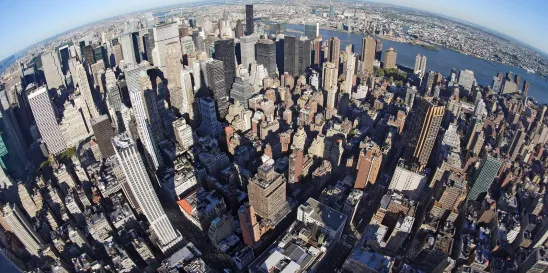New York’s rent stabilization laws, amended in 2019, are arguably the most stringent in the country. Challenges to New York’s rent regulations are not new, and come from both sides of the aisle, tenants and landlords alike. But unlike prior changes, the 2019 amendments hit a chord with New York City landlords who had, generally, made quite expensive investments in residential properties based on projected rent increases commensurate with rising costs and market demand. In 2019, with the passing of these amendments to New York’s rent stabilization laws, landlords’ projected assumptions and operating budgets went completely out the window along with their wallets.
There are approximately one million rent-regulated apartments in New York City, which is roughly half of the City’s housing stock. Understandably, it is difficult to find a rental building in the City that doesn’t have one or more rent-regulated apartments. In some cases, there are hundreds of rent-regulated apartments in one development. These developments are their own little neighborhoods, with parks, ice-skating rinks, farmers markets and other amenities. Imagine you are the owner of one of these developments, or even the owner of a building with a percentage of rent-regulated units, and you have been able to raise rents (albeit modestly due to the City’s Rent Guidelines Board, which limits the annual maximum rental increase), as well as deregulate a percentage of apartments annually as leases expire, in order to preserve and upkeep the grounds, renovate apartments as they come on the market and maintain and add amenities provided for that development or building. And then, in 2019, that stops.
We can now see the fallout from the 2019 amendments to rent stabilization laws. Without reinvestments, properties are falling into disrepair, buildings are being devalued and landlords are forced to take losses just to keep up with the minimum maintenance, resulting in buildings being turned over to banks by landlords who walk away from their investments.
This burden on landlords has led to a number of cases that have been litigated in the federal courts, claiming that the State’s 2019 amendments are unconstitutional and result in a regulatory taking in violation of the 5th Amendment. The two main issues in these disputes are: (i) the Rent Guideline Board’s setting maximum rent levels based, in part, on a tenant’s ability (or inability) to pay; and (ii) the complete prohibition of deregulating apartments even after the expiration of a lease.
One such case brought by the Community Housing Improvement Program (“CHIP”), along with the Rent Stabilization Association of N.Y.C. and a few individual landlords (collectively, “Petitioners”) filed a petition against the City and State of New York, at the United States Supreme Court appealing a decision issued in February 2023 by the Second Circuit, United States Court of Appeals. CHIP and the Rent Stabilization Association of N.Y.C. together represent tens of thousands of landlords throughout the City.
Petitioners argued that the 2019 amendments deny landlords from regaining possession to rent regulated units, and prohibit landlords from changing the use of their building, leaving their property vacant or demolishing a building, while at the same time strictly limiting rent levels by requiring adherence to the rent increases set by the Rent Guidelines Board. The Rent Guidelines Board does consider factors relating to the property owner’s costs, but also considers the tenants ability to pay, which Petitioners argue “has led to a widening gap between the owner costs and regulated rents.” Petitioners also claim that between 1999 and 2018, landlords’ operating costs increased at twice the rate of the Rent Guideline’s Board increases. These arguments led to Petitioner’s ultimate claim, that the 2019 amendments of New York’s rent regulations were a regulatory taking in violation of the 5th Amendment Takings Clause, requiring just compensation.
Petitioners originally filed their lawsuit in 2019 in the District Court for the Eastern District of New York. The Eastern District Court found that Petitioners’ failed to state a claim. The Second Circuit affirmed the Eastern District’s findings, and on October 2nd the United States Supreme Court declined to take Petitioners’ appeal. Both the Eastern District and the Second Circuit, in their decisions, agreed that a physical taking only occurs when there is a deprivation of all property rights, and that the 2019 amendments to the rent stabilization law only restricts the Petitioners’ right to use the property, not to possess or dispose of the property; as such, Petitioners’ claims fail to rise to the level of a physical taking.
As it stands, landlords will continue to take the hit. The only lifeline here comes from State legislation – maybe it is time to “phone a friend” but Who Wants to Be a Millionaire? anyway.



 />i
/>i
